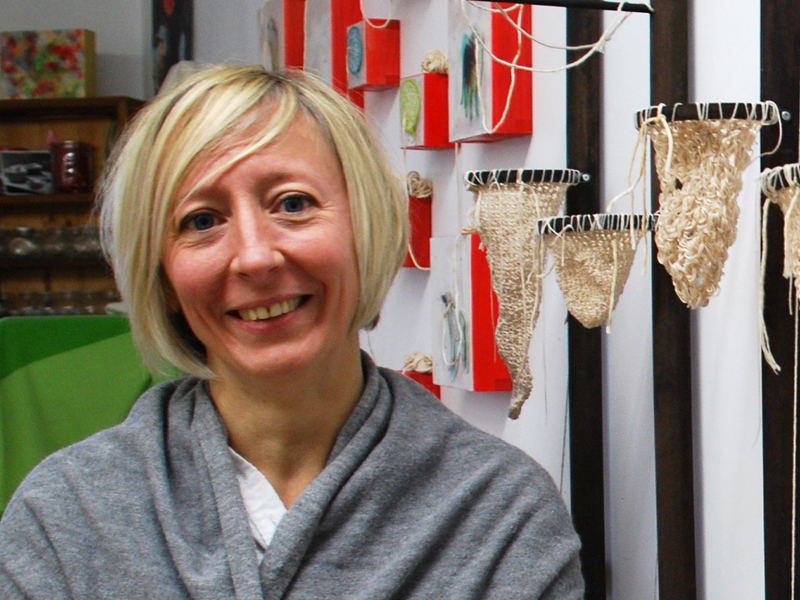Art, animals and us
- Mitch Wright

Humans have a complex relationship with animals. Although animals ourselves, we humans, especially in Western cultures, often see ourselves as exceptional or “above” other species with which we share the planet. Yet those other animals are integral to virtually all aspects of our existence.
In a mixed-media solo exhibition, UVic art education doctoral student Connie Morey explores this idea of “human exceptionalism” and the ethics that underpin and affect humans’ relationships with animals, people, entire ecosystems—anything that might be considered “other” or excluded by our own concept of self.
Entitled Ba_ble, the Feb. 1–24 exhibit of two- and three-dimensional works at Xchanges Gallery showcases the studio research component of Morey’s doctoral work, which is inspired by the work of West Coast writers Jan Zwicky (UVic professor emerita) and Robert Bringhurst. Morey describes her research as an attempt to envision an ecological perspective of imagination and the creative process, and perhaps disrupt the idea of human exceptionalism.
Morey, who also teaches at UVic in the Department of Curriculum and Instruction, began her doctoral research in 2009 under the supervision of Dr. Robert Dalton. She twice earned UVic graduate fellowships and a doctoral fellowship from the Social Sciences and Humanities Research Council of Canada. Morey also won the Lieutenant Governor’s Silver Medal for her master’s research, which was also completed at UVic (See http://ring.uvic.ca/07jun07/morey.html)
Dalton explains that Ba_ble, the title of Morey’s exhibit, plays with the words “Babel” (the Biblical story of early human civilization striving to build an edifice that reached the heavens) and “babble” (the judgment that followed).
“With the sudden arrival of multiple languages, people were scattered to the four corners of the earth, the confusion of languages isolating groups one from another, as it does today,” says Dalton. “Language is one of those markers that we as humans regard as evidence of our superiority over the other species that share this planet.”
While her doctoral course work is done, and the studio research is nearly complete, Morey continues to develop the written portion of her doctoral work, and expects to finish by fall. Her dissertation is tentatively entitled Resonance, Ecology & Imagination. It’s important to note that her art is not so much illustrative of her research as it is a crucial and equal component of her research.
“It’s not a means to an end in the writing,” Morey says, adding that the acceptance of studio work as a fundamental aspect of research has only come about in Canada in the last 10 years, and practice-based research remains a rarity.
With the exhibition of her work, Morey hopes to stimulate others to ask their own questions about human-animal relationships and cultural perceptions toward animals.
“I’m not looking to make a statement so much as looking to inspire questioning and show the complexity and our dependence on animals,” she says, adding the exhibit itself and viewers’ response to it will form part of her research.
“As an artist-philosopher, Connie is less interested in telling us what to think and more interested in inviting us to think,” says Dalton. “An example might be her artful interpretation of bird traps. Viewers will want to consider their own relationship with birds: Are birds caged to entertain us? Are they a source of beautiful feathers that we may use to adorn ourselves and feed our vanity? What gives us the right to take what we please? This is a moral and ethical question that most of us manage to avoid.”
Ba_ble opens Feb. 1 at Xchanges Gallery at 2333 Government St., with an artist’s talk at 7:30 p.m., and continues through Feb. 24.
Video: http://bit.ly/XVGxvE

